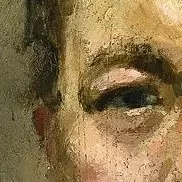(American, 1849-1927)
Howling Wolf was a Southern Cheyenne warrior who was a member of Black Kettle’s band and was present at the Sand Creek Massacre in Colorado. After being imprisoned in the Fort Marion in Saint Augustine, Florida in 1875, Howling Wolf became a proficient artist in a style known as Ledger art for the accounting ledger books in which the drawings were done.
Howling Wolf, along with his father Eagle Head (Minimic), were in the Southern Cheyenne camp on Sand Creek in Colorado Territory on the morning of November 29, 1864, when they were attacked by Colonel John Chivington and the First Regiment of Colorado Volunteers. The camp was caught off guard as Black Kettle was instructed to camp there by the U.S. Army and most of the braves were out on a hunt.
More art: https://artvee.com/artist/howling-wolf/
Great to see some non Western / European art.
https://en.m.wikipedia.org/wiki/Ledger_art
An increasing supply of ledger books and other paper came from traders, government agents, missionaries, and military officers.[7] With these came pencils, ink fountain pens, crayons, and watercolor paints.[8][9] These new tools allowed for greater detail and experimentation than the earlier tools, such as bone or wood styli dipped in mineral pigments, had. The compact ledger books and pencils were highly portable, making them ideal for nomadic lifestyles.[10]
Thanks. The "Commodification and dispersal " section on that page is interesting.
The roots of this commercialization can be traced to the late 19th century, when the founder of the Carlisle Indian School, Col. Richard Pratt began to teach entrepreneurial values to the Fort Marion prisoners of war. Artists held in this prison camp, such as Zotom and Howling Wolf were trained to create drawings on commission to “wealthy white patrons” in his efforts to assimilate the prisoners.


